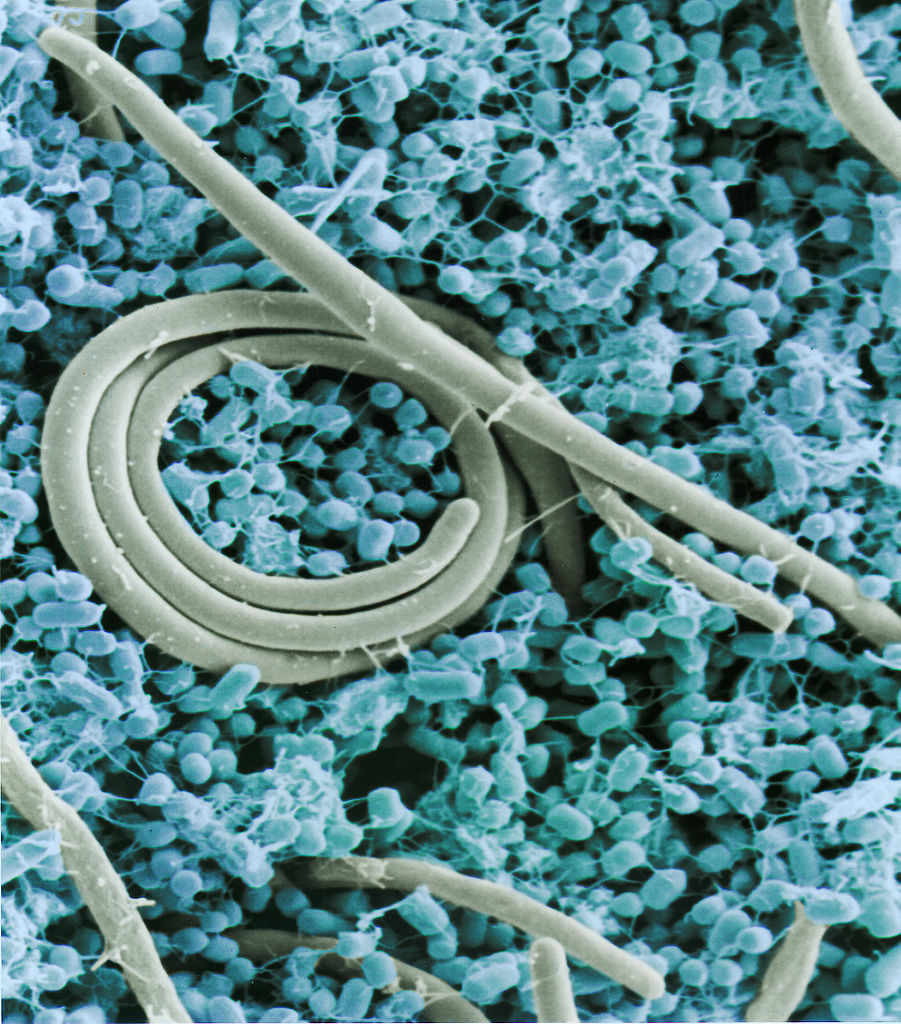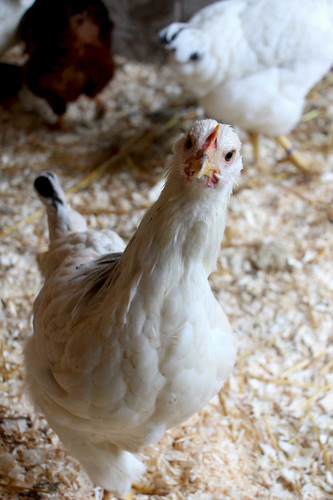So I went to this little UMN Extension workshop today, Producing and Selling Eggs and Poultry.”
There were a number of small scale poultry producers in attendance, and I do mean small. I was the 2nd largest producer there, with a whole 62 bird flock. The biggest producer was a lady from down near the Iowa border who had a flock of about 400. There was even a couple who drove 80 miles down from St. Paul to find out how to sell the excess eggs from their 3 hens that they kept in their backyard.
Anyway, the workshop was pretty straightforward. Here’s the Minnesota laws that you’ll need to follow, and here’s how to do it. Easy peasy.
That is, until the presenters, all inspectors with the MDA’s Dairy & Food Inspection Division, start telling us about the silent epidimic. It already sounds scary right?
Well, it gets pretty for-real scary if you’re an egg producer.
Salmonella Enteritidis (SE) is one of the ~2300 varieties of Salmonella. This particular form of Slamonella just happens to be the reason that you’ve been warned against eating raw cookie dough, egg nog, merangue, hollandaise sauce, or anything else that’s awesome.
Salmonella Enteritidis is perfectly adapted to living in the intestine of a chicken, causing the chicken no harm, but potentially passing the infection to a human through the consumption of the chicken’s egg. If a person eats an undercooked or raw egg that’s infected with SE then they stand a fair chance of developing Salmonellosis. Salmonellosis is usually an unpleasant infection, though in susceptible populations (the very old and very young) it can be deadly.
So you’re a farmer, and you’re producing eggs that might possibly kill someone? That’s bad.
How about we just run some tests and make sure we don’t have any SE in our flock? Sounds good right?
Yeah, sounds good until you ask how much testing costs. The MDA inspectors just grit their teeth and shake their heads, “It’s really expensive. There’s only like 4 labs in the whole country that can test for it.”
Ouch.
So nobody can really afford to test for it, how about monitoring our birds for signs of infection?
Turns out, as SE is perfectly adapted to live in chickens, the chickens show absolutely no signs of infection. Even a heavily-infected bird will look perfectly healthy, as the bacteria don’t harm the chicken at all.
Drat.
So it’s invisible, effectively undetectable, and it can hurt people. How about some liability to top off that pile of awesome?
Yep, the MDA inspectiors pulled no punches when they informed us that, even though SE is essentially undetectable, we would be held liable if we sold any egg that was infected with SE. The MDA considers an egg infected with SE to be an “adulterated product” and therefore illegal to sell, even if you have no way of knowing that it’s infected, and even if it wasn’t prepared according to the safe handling practices printed on every egg carton.
To top it all off, if you’re ever found to have sold an SE-infected egg, the MDA will, in all likelihood, order your entire flock destroyed.
It’s at this point that there is a room full of farmers freaking out and trying to plan their hasty exit from the poultry business.
Of course, being the level-headed one, I ran the numbers.
Last year was a “bad year” for SE outbreaks in Minnesota. There were 4. That’s it. 4. In a bad year.
Every single one of those 4 originated in a restaurant with some serious food handling problems. We’re talking raw-egg hollandaise sauce sitting out unrefrigerated for 6 hours bad. Or didn’t wash the ladle for the pancake/waffle/french-toast batter all week bad.
Of those 4 outbreaks there were: 46 sickened, 9 hospitalized and nobody died (30 sick and 9 hospitalized were from a single outbreak).
In fact, when pressed, none of the MDA inspectors could recall a single death caused by SE. Neither could they recall a single instance of a farmer being held sued as a result of a SE outbreak.
So while the SE menace might not be as horrific as they initially made it out to be, it’s still something that we’d like to prevent if at all possible. Here’s what we’re doing to help keep our eggs (and chickens) SE free.
Our chickens come from a hatchery that participates in the NPIP, meaning that they come from a SE monitored and SE vaccinated flock.
We work to safely eliminate mice that are the single biggest natural reservoir [PDF] of SE.
We’re looking into SE vaccinations for our flock. It’s not supposed to be as effective in older birds, but it might be cheap insurance.
And at the MDA inspector’s recommendation, we’re doing what only us small farmers can do. Socializing our chickens to reduce their stress. Turns out that even if a chicken is infected with SE, they only shed the bacteria when they’re stressed. By hanging out with them and practicing good animal husbandry, we can reduce or eliminate the times that they shed SE. Try doing that in an industrial chicken barn!


